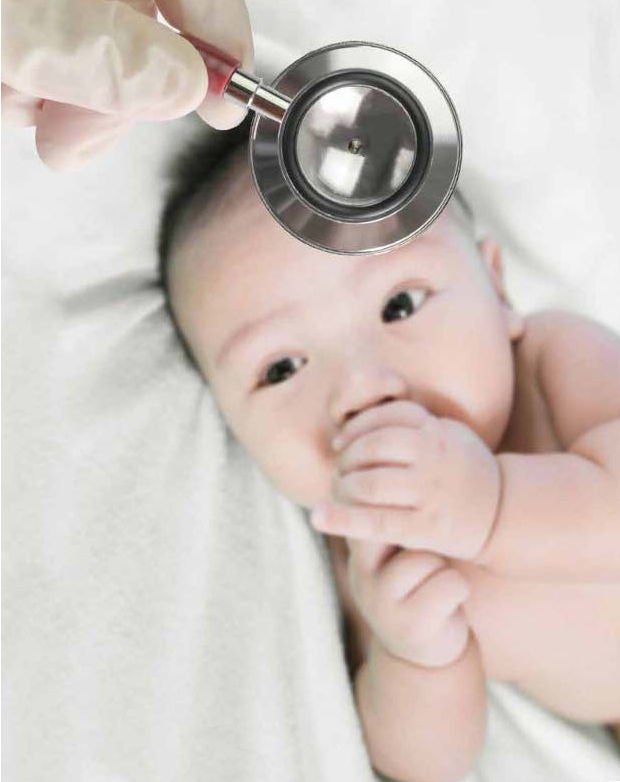
A follow-up to the article published in a previous issue, here are five other common baby problems and their solutions.
Parenthood has its share of challenges and new learning curves. In the November-December 2020 issue, Dr Alvin Ngeow, Consultant, Department of Neonatal and Developmental Medicine, Singapore General Hospital (SGH), talked about jaundice, vomiting, colic, abdomen distension, and plagiocephaly. In this article, Dr Ngeow discusses five additional common baby problems and useful tips to help you with your child’s early years.
1. Skin problems
It is a common misconception that babies have perfect complexions. In fact, they are prone to skin problems, such as erythema toxicum, a pimple-like rash with a red base; neo-natal acne, which resembles pimples; and cradle cap, which is yellowish scaly plaque on the head, and sometimes the eyebrows and neck.
Doctor’s advice: While these blemishes may look alarming, they will not harm your little one and will resolve on their own. For cradle cap, you can apply olive oil to your baby’s head an hour before bathing to soften the flakes so that when you wash the head, you can easily wipe them off.
2. Diaper rash
These inflamed red patches are caused by irritation from urine and faeces trapped in diapers. One simple way to determine if your baby is suffering from diaper rash is to stretch its legs apart and check the area between the legs and pubic area. As this area is not in contact with urine and faeces, it should be rash-free.
Doctor’s advice: To calm diaper rash, change diapers more frequently, and clean the area with a dabbing, rather than rubbing, motion so as not to break the superficial layer of the skin. Alternatively, simply wash the area with water. A barrier cream will provide an additional layer of protection.
If you notice that the area between the pubic area and legs is affected, your baby may be suffering from a fungal infection and may need to see a doctor for an anti-fungal cream prescription.
3. Oral thrush
If you notice a white lesion on your baby’s tongue, inner cheeks or even the roof of the mouth and gums, he may be suffering from oral thrush, a fairly common type of fungal infection.
Doctor’s advice: To determine if this white substance is thrush and not milk curd, try wiping it off with a clean gauze or handkerchief. Milk curd can be wiped off easily. Oral thrush is very difficult to wipe off and will leave a red base when forcefully removed. However, it can be easily treated with an anti-fungal gel or syrup. Bear in mind that for breastfed babies, the mother’s nipple may also be infected and needs to be treated too.
4. Fever
Normal body temperature falls between 36.5°C and 37.5°C. Any temperature above that may be considered a fever. This is usually a sign that the immune system is working to fight an illness, usually a bacterial or viral infection, such as upper respiratory tract infection or influenza.
Doctor’s advice: Newborn infants with weak immune systems will need to be admitted to hospital if their fever reaches 38°C. However, for babies above three months old, doctors will do a thorough examination to determine the cause of their infection. In milder cases, they may be prescribed paracetamol or ibuprofen. Parents are advised to keep their child well hydrated and cool, and for the child to get ample rest.
In serious cases, viruses can go on to infect the lungs, and cause phlegm, tightening of the windpipe, wheezing and breathlessness. This is known as bronchitis or bronchiolitis. Patients may need additional treatment, such as oxygen therapy or nebulisation. Another possible cause of prolonged fever may be urinary tract infection, which may require a course of antibiotics.
5. Eye discharge
This may look like an eye infection, but it is usually less serious. When the eye produces tears, these are drained through a pipe leading from the eyes to the nose. However, babies’ pipes are very small and can easily get blocked. Hence, tears and dried secretion cannot drain downwards and get stuck near the inner corner of the eyes. This condition will resolve on its own as the baby gets older and the pipe enlarges.
Doctor’s advice: Wash your little finger clean with soap and water, and use it to gently massage the inner corner of the baby’s eye downwards (towards the nose) to help clear the blockage. Use a clean cotton wool with cool boiled water to wipe the discharge away.













 Get it on Google Play
Get it on Google Play